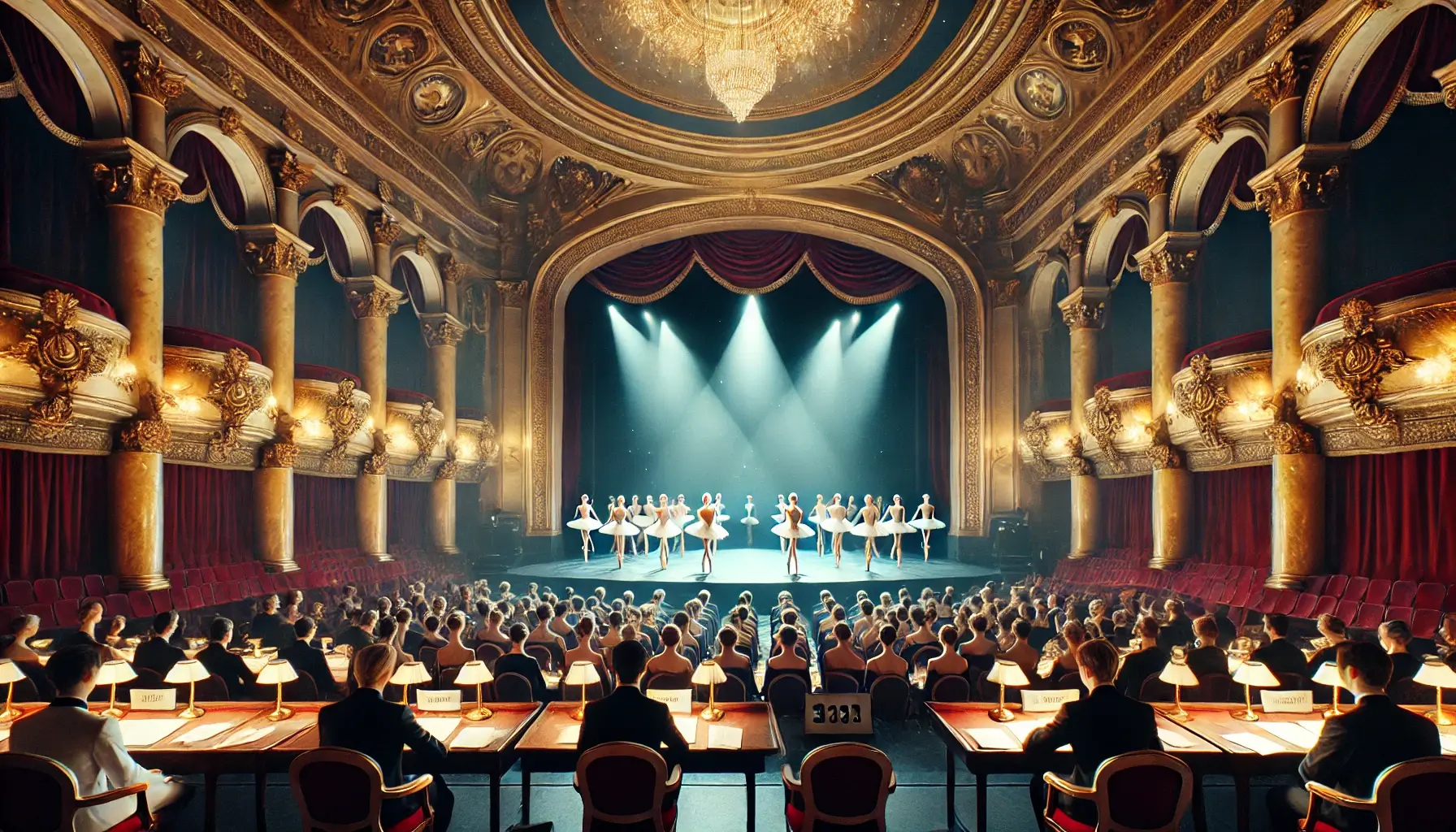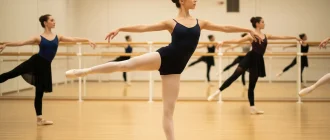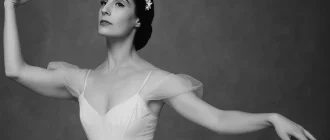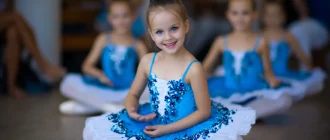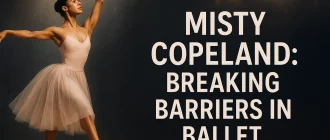The Royal Academy of Dance’s Genée International Ballet Competition, now the Margot Fonteyn International Ballet Competition, is a globally leading event for young dancers. Tim Arthur, Chief Executive of the Royal Academy of Dance, emphasizes the event’s significance, noting its crucial role in the international dance industry.
Originating in 1931, it offers RAD-trained young ballet dancers a prestigious platform for showcasing their talent internationally. Discover its rich history, entry criteria, recent highlights, and support for participants in this article.
Key Takeaways
- The Genée International Ballet Competition, now known as the Margot Fonteyn International Ballet Competition, is a prestigious event established in 1931 that celebrates young ballet talent globally.
- Strict eligibility criteria and a structured application process maintain high standards, requiring candidates to attain specific RAD examination levels and possibly apply for bursaries for financial support.
- Recent competitions have highlighted exceptional talents, with winners often receiving scholarships and invitations to esteemed ballet institutions, showcasing the competition’s role in providing future opportunities for young dancers.
| Category | Details |
|---|---|
| Name | The Genée International Ballet Competition |
| Organizer | Royal Academy of Dance (RAD) |
| Founded | 1931 |
| Purpose | To identify and nurture talent in young ballet dancers worldwide, providing them opportunities to showcase their skills and gain international recognition. |
| Eligibility | Open to dancers aged 15-19 who have passed the RAD’s Advanced 2 examination. |
| Competition Format | – Preliminary Rounds (classical ballet class, variations, and contemporary solos)- Semi-Finals- Finals (up to 12 dancers selected) |
| Award Categories | – Gold, Silver, and Bronze Medals\n- Audience Choice Award\n- Choreographic Award |
| Judging Criteria | Technical proficiency, artistry, musicality, and overall performance quality. |
| Notable Alumni | Darcey Bussell, Christopher Wheeldon, Marianela Núñez |
| Recent Locations | – Toronto, Canada (2019)\n- Lisbon, Portugal (2017)\n- Sydney, Australia (2016) |
| Scholarships and Opportunities | Winners and finalists often receive scholarships, apprenticeships, and contracts with prestigious ballet companies around the world. |
| Special Features | – Mentorship from leading ballet professionals- Masterclasses and workshops during the competition week |
| Impact on Career | This significantly boosts a dancer’s career, often leading to opportunities in major ballet companies and international recognition. |
| Recent Winners | – Gold Medal: Cece Marambio (2019) n- Silver Medal: Shunhei Fuchiyama (2019) n- Bronze Medal: Pippa Moor (2019) |
| Website | Royal Academy of Dance – Genée International Ballet Competition |
The Genée International Ballet Competition: An Overview
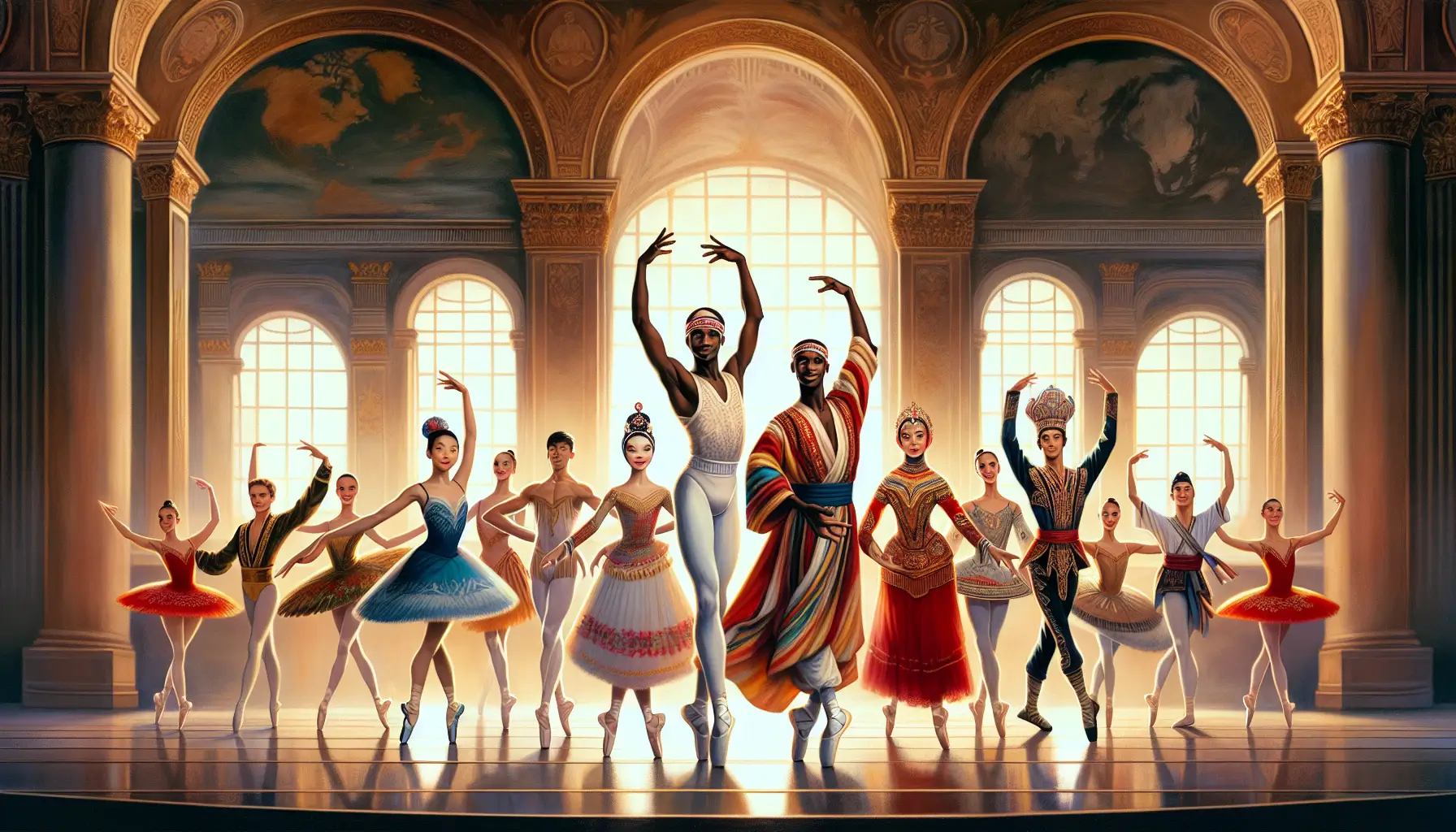
The Genée International Ballet Competition, now famously known as the Margot Fonteyn International Ballet Competition, holds a venerable place in dance. Established in 1931, the competition was originally named after Dame Adeline Genée, RAD’s first president, with the first Adeline Genée Gold Medal awarded to Felicity Garratt.
Over the years, the competition has grown in prestige and is now recognized globally as a premier event for young ballet dancers trained in the RAD syllabus.
The competition has seen several changes since its inception. In 1934, silver medals were introduced, followed by bronze medals in 1956.
Including gold and silver medals for male dancers in 1938 marked another significant milestone in the competition’s history. These medals are not just awards; they symbolize the pinnacle of achievement for young dancers, recognizing their dedication, skill, and artistry.
Renaming the competition to the Margot Fonteyn International Ballet Competition in May 2019 was a tribute to one of ballet’s most iconic figures. This change reflects the competition’s ongoing commitment to celebrating excellence and inspiring the next generation of dancers to aspire to the high standards exemplified by Margot Fonteyn herself.
How to Enter the Genée International Ballet Competition
Many young dancers aspire to enter the Genée International Ballet Competition. Yet, this esteemed ballet competition maintains strict eligibility criteria, enabling only the most dedicated and talented to participate.
Applicants must be reasonably expected to achieve RAD Advanced One and Distinction at RAD Advanced Two by the designated date for recent competitions, which is set for May 31, 2020. This ensures that participants have reached a high level of proficiency in their ballet training.
The application process for the Margot Fonteyn International Ballet Competition is thoughtfully structured to maintain the competition’s high standards. Here are the key steps:
- Candidate applications are typically open from 1 to 31 May each year.
- Teachers play a crucial role in preparing their students for the competition and ensuring they are registered for examinations in line with the application deadline.
- Students must receive their examination results before the application deadline to verify their eligibility.
The requirements are even more stringent for those aiming to apply for a bursary. Applicants must have achieved RAD Advanced 1 and a Distinction at RAD Advanced 2 to be considered. This additional support can be vital for many young dancers, providing them with the financial assistance needed to participate in such a special event.
Highlights from Recent Competitions
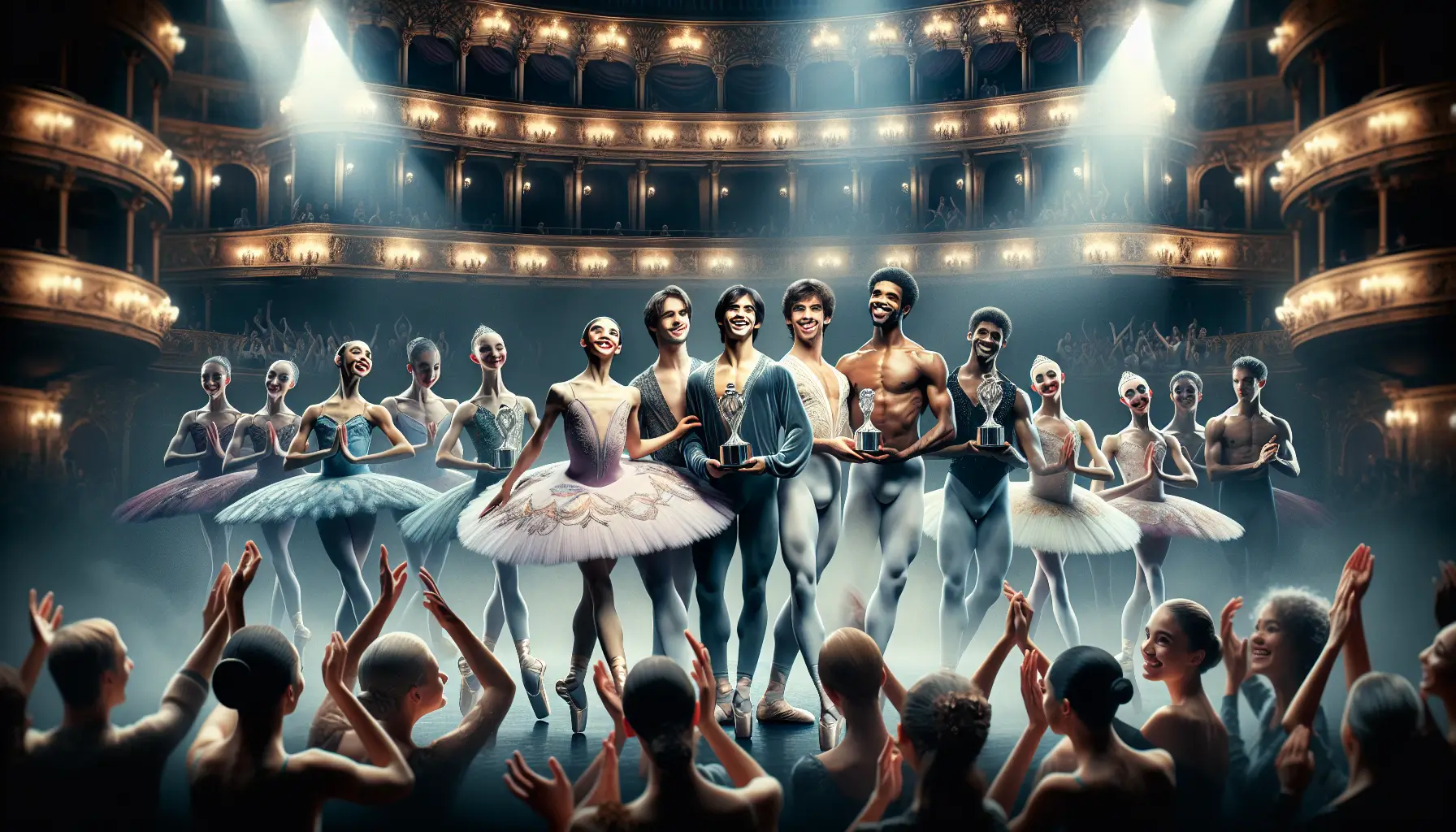
The Genée International Ballet Competition continually highlights exceptional talent, with recent events underscoring the remarkable achievements of its participants. For instance, Campbell Bastos secured a Top 20 position in both the Senior Classical and Senior Contemporary categories at the ADC IBC Atlanta competition.
This accomplishment underscores the high skill and dedication required to excel in such prestigious ballet competitions.
Similarly, Kaitlyn Fox has consistently demonstrated her prowess in international ballet competitions. Her achievements include:
- Placing in the Top 20 for Senior Classical and Senior Contemporary at ADC IBC Atlanta
- Earning a spot in the Top 24 for Senior Classical at the YAGP Winston-Salem competition
- Securing a Top 24 placement at YAGP Atlanta
- Achieving 2nd Place in the Senior Classical category and 6th in the Senior Competitive category at UBC Wilmington
These successes are not just about rankings; they often come with significant rewards. At the ADC IBC Finals:
- Cambell Bastos received a scholarship to the Next Generation Ballet and the Sarasota Ballet
- Kaitlyn Fox was awarded an invitation to the Cary Ballet
- Mae Dunbar earned a scholarship to the International Ballet Academy
These achievements further highlight the competition’s role in opening doors to future opportunities.
Training and Coaching Sessions
The comprehensive training and coaching sessions offered to participants are among the most valued aspects of the Genée International Ballet Competition. These sessions span five days before the semi-finals, providing young dancers with:
- Intensive preparation
- Personalized feedback
- Individual attention
- Corrections tailored to their specific needs
Competitors are divided into smaller groups to ensure each young dancer trained receives the necessary attention and corrections.
The training focuses on technique and performance elements, such as spacing and character portrayal. Former Royal Ballet dancer Petal Miller Ashmole, acting as a guest principal coach, often leads classical coaching sessions, emphasizing stage and port de bras. Her expertise in these areas helps dancers refine their performances, ensuring they are well-prepared for the semi-finals and finals.
Additionally, competitors receive coaching on their self-choreographed solos, known as Dancer’s Own, from experienced professionals like Hilary Clark. These sessions are pivotal for dancers refining their choreography and conveying their artistic vision.
A new variation, commissioned specifically for the competition, is taught and refined by renowned choreographers such as Carlo Pacis during these sessions. This comprehensive training ensures that participants are technically proficient and artistically expressive.
| Aspect | Details |
|---|---|
| Program Name | The Royal Academy of Dance’s Training and Coaching Sessions |
| Target Audience | Students of all ages, from young dancers to pre-professionals and professional dancers |
| Program Goals | To enhance technical skills, artistic expression, and overall performance quality |
| Session Types | Private coaching, group classes, intensive workshops, and specialized sessions for competitions |
| Faculty | Experienced RAD-certified instructors, guest teachers, and industry professionals |
| Duration | Sessions range from single-day workshops to multi-week programs |
| Curriculum Focus | Classical ballet technique, pointe work, repertoire, contemporary dance, character dance, and more |
| Assessment and Feedback | Personalized feedback during sessions, with detailed reports and follow-up guidance |
| Location | Offered at RAD headquarters in London, affiliated studios worldwide, and online |
| Special Features | Tailored sessions for specific RAD exams and competitions, including preparation for Genée |
| Enrollment Requirements | Open to RAD students; non-RAD students may be required to audition or undergo an assessment. |
| Cost | Varies by program type and duration; financial aid and scholarships may be available. |
| Outcome and Certification | Completion certificates; improved readiness for RAD exams, competitions, and professional auditions |
This table provides a concise overview, highlighting the essential elements of the RAD’s Training and Coaching Sessions. Feel free to ask if you need more detailed information or a further breakdown!
Prizes and Awards
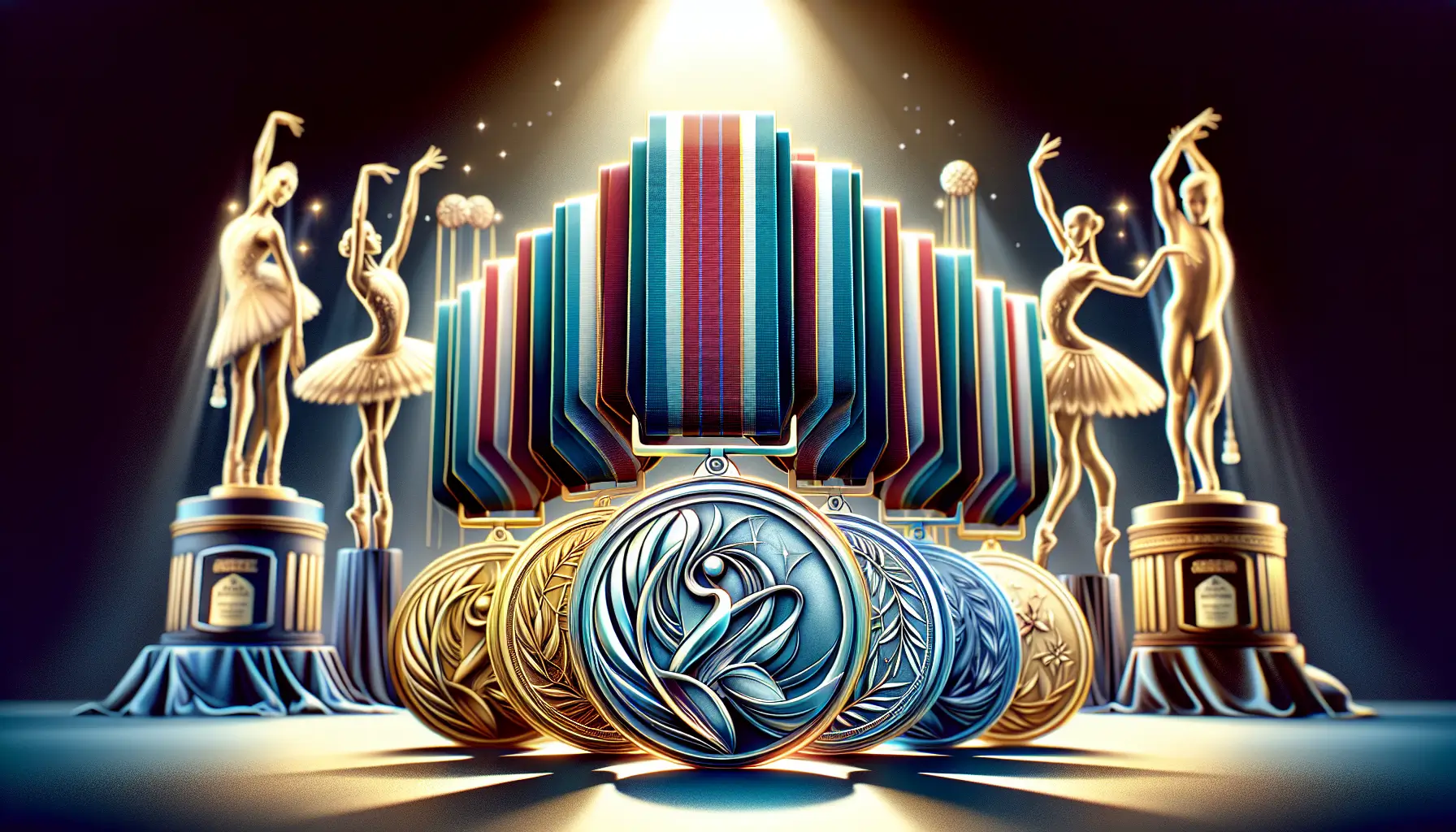
The Genée International Ballet Competition is celebrated for its prestigious awards and the distinction they confer upon winners. At the pinnacle of these awards is the gold medal, one of the highest honors in the competition, continuing to honor the legacy of Adeline Genée.
Winning such a special event and a gold medal at such a prestigious ballet competition is a testament to a dancer’s exceptional talent and dedication.
In addition to gold medals, silver and bronze medals are awarded to outstanding performers, recognizing their excellence in ballet. These medals are symbols of achievement that young dancers cherish forever, marking significant milestones in their careers.
Special awards add another layer of recognition to the competition. The Audience Choice Award, based on votes from the audience, celebrates the most captivating performance, while the Choreographic Award acknowledges outstanding choreography presented by participants. These awards highlight the diverse talents of the competitors and the unique aspects of their performances.
Support and Sponsorship
The success of the Margot Fonteyn International Ballet Competition relies considerably on the support and sponsorship it garners. The competition is presented with contributions from:
- Corporate sponsors
- Grant-making organizations
- Foundations
- Individuals
These sponsors are essential in maintaining the event’s seamless operation and sustained prestige.
Sponsorship opportunities offer various packages that can significantly enhance brand visibility. These include:
- Naming opportunities for awards
- Dedicated email blasts
- Website ads
- Social media highlights
- Booths at regional events and finals week
Such arrangements provide sponsors with extensive exposure to a global audience passionate about ballet, including young ballet dancers internationally and the English National Ballet, under the guidance of an artistic director.
Moreover, a new bursary scheme has been introduced to support applicants. Two thousand twenty-ten bursaries were made available, including three fixed Dame Margot Fonteyn Scholarship Fund bursaries of £1,500 each and seven fixed Dame Darcey Bussell Centennial Bursaries of £1,000 each.
These bursaries provide essential financial support, enabling more young dancers to participate in the competition and pursue their dreams.
Notable Alumni
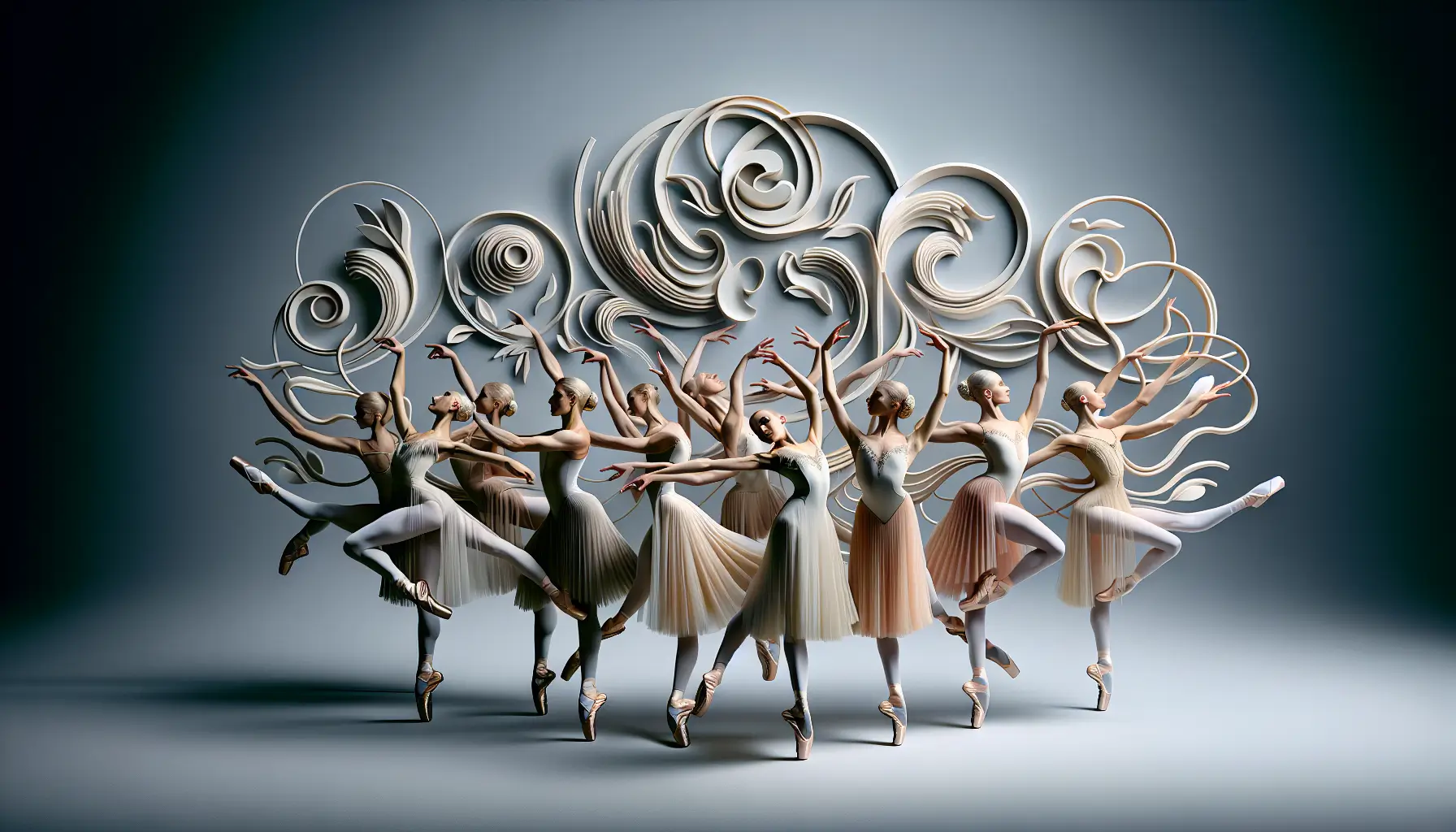
The Genée International Ballet Competition boasts a rich history of notable alums, many of whom have gone on to distinguished careers in globally acclaimed ballet companies. Steven McRae, a past participant, became a principal dancer at the Royal Ballet, exemplifying the heights that competition can reach. Similarly, Lauren Cuthbertson, another alumna, also rose to the rank of principal dancer with the Royal Ballet.
Francesca Hayward, a silver medallist at the Genée competition, is now a principal dancer with the Royal Ballet, showcasing the competition’s role in nurturing top-tier dance talent.
Alexander Campbell, another silver medallist, has also achieved the prestigious position of principal dancer with the Royal Ballet. Céline Gittens, who won gold at the competition, became a principal dancer at the Birmingham Royal Ballet, further highlighting the competition’s impact on dancers’ careers.
Other notable alums include Rowena Jackson, Claudia Dean, and many others who have joined top ballet companies worldwide. The competition’s legacy is reflected in the success of its participants, many of whom have become influential figures in the international dance industry.
The Role of Dame Margot Fonteyn
After whom the competition is named, Dame Margot Fonteyn, remains an enduring source of inspiration for young ballet dancers around the world.
Renowned as the greatest ballerina of her day, Margot Fonteyn’s legacy continues to influence the Royal Academy of Dance and the competition. Renaming the competition to ‘The first Margot Fonteyn’ was a move to honor her and inspire candidates to aspire to her high standards.
The competition encourages participants to embody the timeless qualities of classical ballet artistry exemplified by Margot Fonteyn. Her grace, technique, and dedication to the art form are qualities that every competitor strives to emulate. The Margot Fonteyn Audience Choice Award, named in her honor, is a testament to her lasting impact on ballet.
Dame Margot’s influence extends beyond the competition, inspiring young dancers to pursue excellence in their craft and contribute to the rich tradition of classical ballet. Her legacy is a beacon for all who participate in the competition, reminding them of the artistic heights they can achieve.
Venue Spotlight: Majesty’s Theatre and Royal Opera House
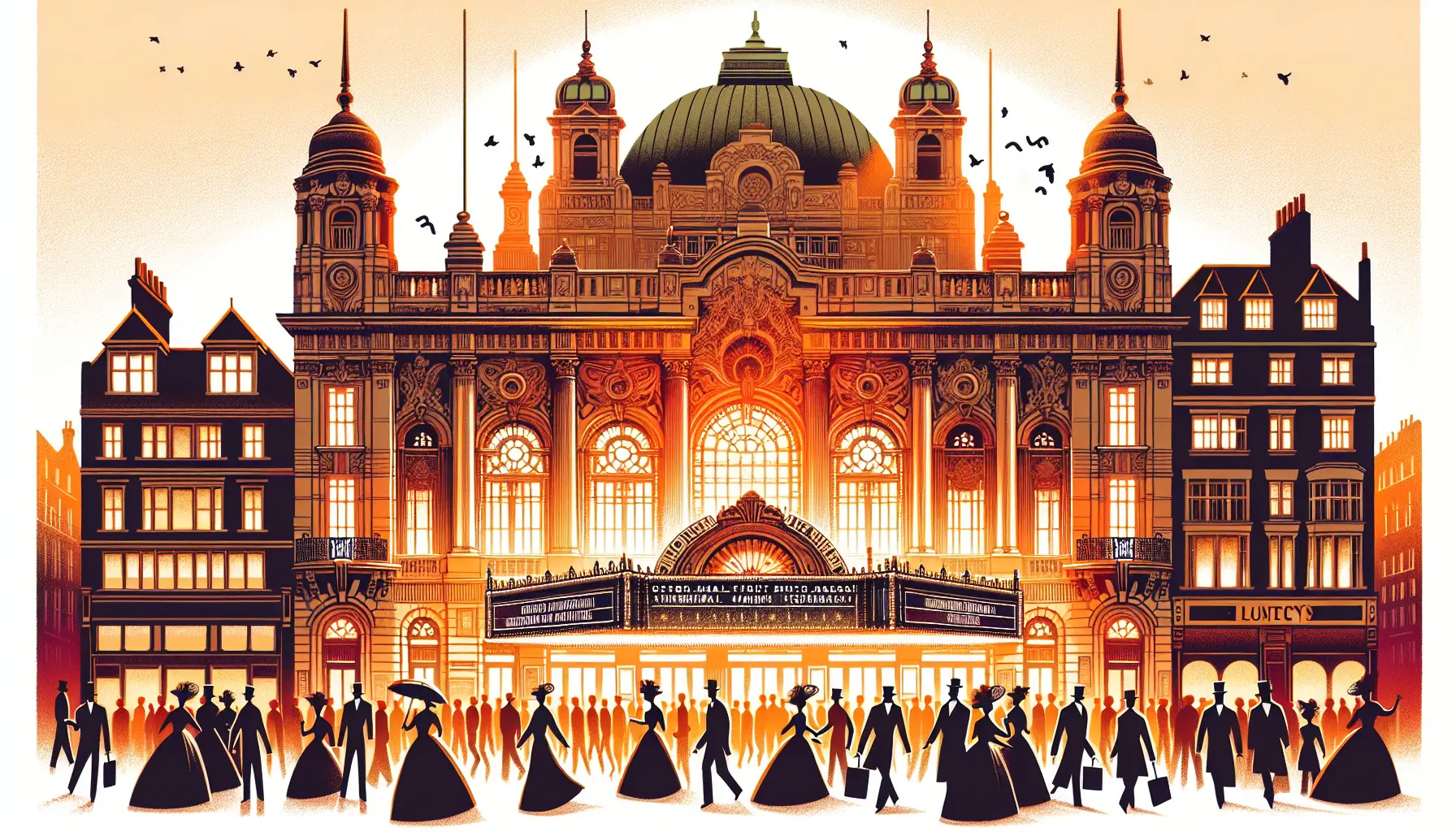
The venues hosting the Margot Fonteyn International Ballet Competition make a significant contribution to the event’s grandeur. His Majesty’s Theatre, located in the heart of London’s vibrant West End, will host the September 2024 Fonteyn International Ballet competition finals.
This historic theatre, opened on 28 April 1897, has been a cornerstone of London’s cultural scene for over a century. The current building, the fourth theatre on the site, was renamed from Her Majesty’s Theatre in May 2023.
The semifinals will be held at the RAD Headquarters in London from September 4 to 6, 2024. These venues provide a prestigious backdrop for the competition, enhancing the experience for both participants and audiences. Performing at such iconic locations is a dream for many dancers, adding to the allure and significance of the competition.
These historic venues underscore the competition’s commitment to excellence and tradition, offering a fitting stage for young dancers to showcase their talent and artistry.
The grandeur of His Majesty’s Theatre and the Royal Opera House adds a touch of magic to this already exceptional event.
The Future of the Genée International Ballet Competition
Moving forward, the Margot Fonteyn International Ballet Competition remains committed to:
- Promoting excellence and encouraging global collaboration within the ballet community
- Providing a platform for young dancers to work with world-renowned choreographers
- Allowing dancers to perform on an international stage
- Nurturing and inspiring the next generation of ballet professionals
The competition’s goals include recognizing outstanding talent and encouraging the development of new and innovative choreography. This focus on performance and creativity ensures that the competition remains at the forefront of the international dance industry. The semi-finals at RAD HQ from September 6 to 6, 2024, will testify to this ongoing commitment to excellence.
As the competition evolves, it will provide invaluable opportunities for young dancers to showcase their abilities and gain exposure to the global ballet community. The future of the Genée International Ballet Competition looks bright, thanks to its ongoing dedication to nurturing talent and celebrating the art of ballet.
To research the future of the Genée International Ballet Competition, I will create a featured table that highlights key aspects, including emerging trends, challenges, opportunities, and potential directions for the competition. Below is the table:
| Aspect | Details |
|---|---|
| Current Status | The Genée International Ballet Competition is among the most prestigious for its focus on classical ballet and the Royal Academy of Dance (RAD) syllabus. |
| Emerging Trends | – Increased emphasis on digital platforms and virtual competitions. – Greater inclusion of contemporary and neoclassical styles. – Focus on diversity and accessibility. |
| Challenges | – Adapting to the post-pandemic world with potential hybrid formats. – Balancing tradition with the need for innovation. – Addressing financial constraints faced by participants. |
| Opportunities | – Expanding global reach through online streaming and virtual participation. – Collaborations with leading ballet companies for scholarships and mentorship programs. – Developing specialized training programs for diverse dance styles. |
| Potential Directions | – Introducing a new category for innovative choreography. – Strengthening the competition’s role in supporting emerging talent through enhanced scholarship opportunities. – Hosting regional pre-selection events to broaden participation. |
| Long-Term Vision | – Positioning the Genée as a ballet education and competition leader through continuous adaptation and innovation. – Expanding its influence in global dance communities by fostering a network of alumni and professionals. |
This table summarizes the future outlook of the Genée International Ballet Competition, focusing on how it may evolve and adapt in the years to come. Feel free to ask if you need further details on any specific aspect or additional research!
Summary
The Margot Fonteyn International Ballet Competition, formerly known as the Genée International Ballet Competition, stands as one of the most prestigious ballet competitions in the world. Its rich history, dating back to 1931, highlights its role in shaping the careers of countless young dancers trained in the RAD syllabus.
The competition’s evolution, including the introduction of various medals and its renaming to honor Dame Margot Fonteyn, underscores its commitment to excellence and tradition.
Entering this competition is a rigorous process that requires participants to meet high standards of proficiency and dedication. The comprehensive training and coaching sessions provided to competitors ensure they are well-prepared to showcase their skills and artistry.
The prestigious awards, including gold, silver, and bronze medals, as well as special awards like the Audience Choice Award, honor the exceptional talent of the participants.
Notable alums, such as Steven McRae and Francesca Hayward, exemplify the Royal Academy of Dance Competition’s impact on the international dance industry. The support and sponsorship from various sources, as well as prestigious venues like His Majesty’s Theatre and the Royal Opera House, add to the competition’s grandeur.
Looking ahead, the competition aims to continue promoting excellence and fostering global collaboration, ensuring a bright future for the next generation of ballet professionals.
Frequently Asked Questions
What are the eligibility requirements to enter the Genée International Ballet Competition?
To enter the Genée International Ballet Competition, applicants must reasonably expect to achieve RAD Advanced One and Distinction at RAD Advanced 2 by the designated date.
How can I apply for a bursary to participate in the competition?
You can apply for the bursary by meeting the eligibility criteria, including achieving RAD Advanced 1 and a Distinction at RAD Advanced 2, and submitting your application during the designated period, typically from early January to early March.
What kind of training and coaching sessions are provided to competitors?
Competitors receive five days of intensive training and coaching sessions led by experienced professionals, including former Royal Ballet dancers and renowned choreographers, to focus on technique and performance. This prepares them for the semi-finals.
What awards and prizes can participants win at the competition?
Participants can win gold, silver, and bronze medals, as well as special awards like the Audience Choice Award and the Choreographic Award, which recognize outstanding talent and artistry in ballet. Good luck!
Who are some notable alumni of the Genée International Ballet Competition?
Notable Genée International Ballet Competition alums include Steven McRae, Lauren Cuthbertson, Francesca Hayward, Alexander Campbell, and Céline Gittens, who have distinguished careers as principal dancers in world-renowned ballet companies. These dancers are considered some of the most accomplished in the ballet world.

